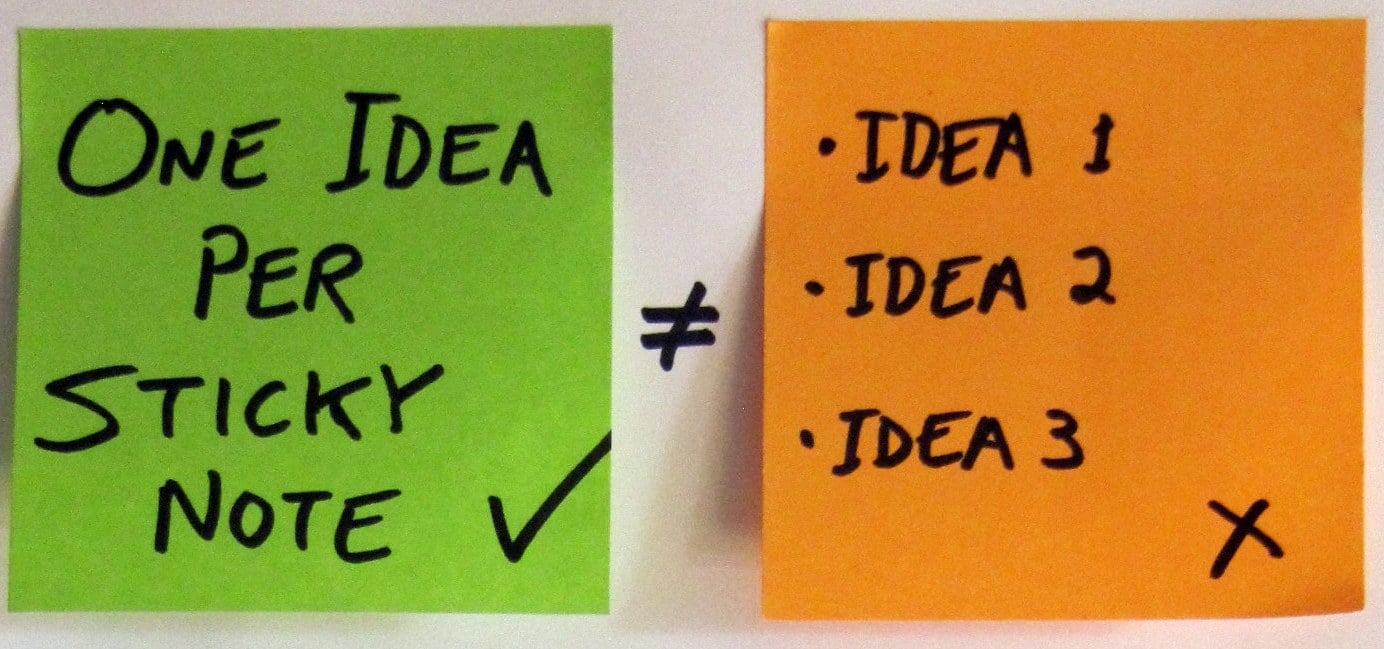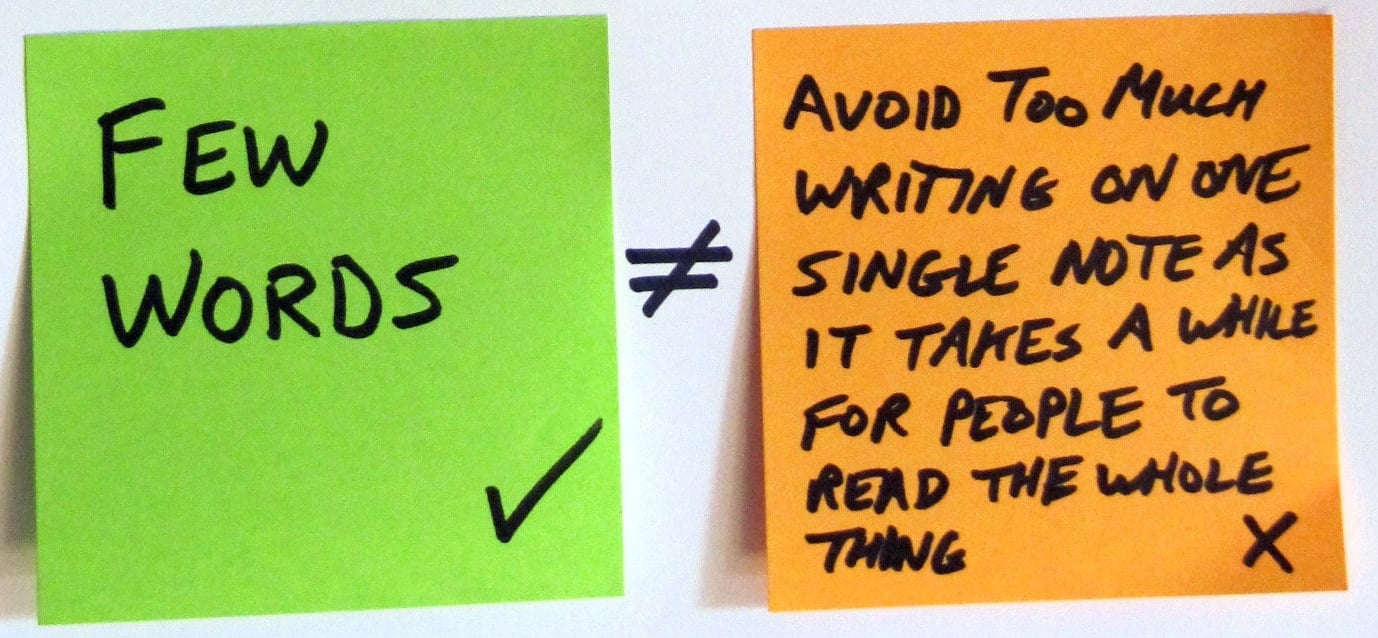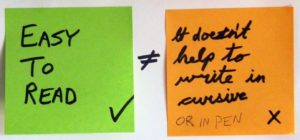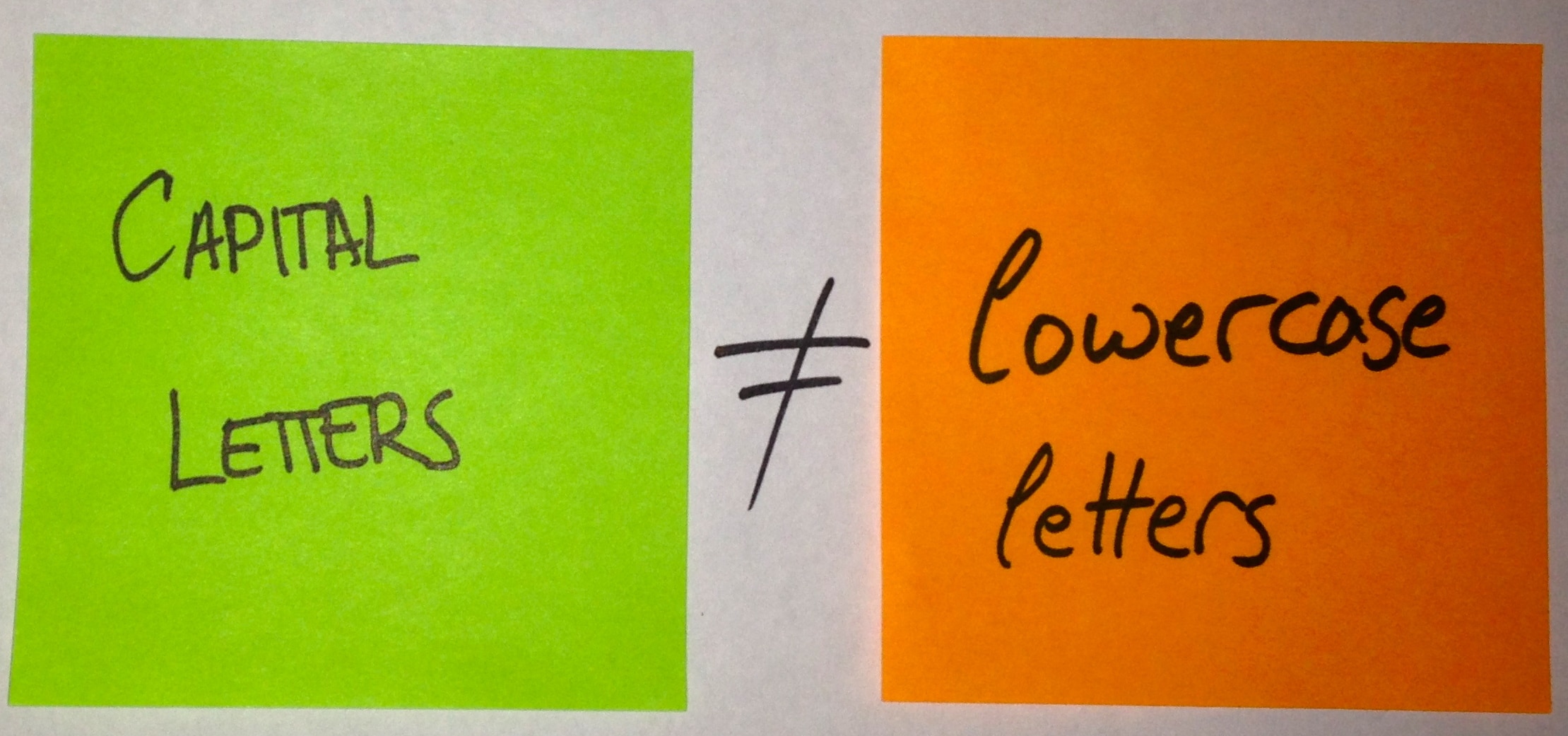Agile teams and innovators use sticky notes in group meetings to share ideas, organize thoughts and get to consensus. I created some guidance on using sticky notes to help people just getting started or for those who want to go faster. Here are some simple guidelines to go fast.
Optimize for Reading, not Writing
Do we want to optimize sticky notes for reading or writing?
For many common usage patterns, each sticky note will be read hundreds of times for even a small group of people. With this much reading going on, it’s common sense to optimize for reading. So, it’s a good investment to create quality sticky notes so that your group can communicate fast. This is especially true for retrospectives, but even more critical for Product Backlog/Story Map Boards and Iteration/Kanban boards.
FYI, this is also true for software code – it is a big win to write readable code for the same reasons as above.
One Idea Per Sticky Note
There is a lot of value in writing one idea per sticky note. It gives us more space to write each idea. But more importantly, we can move each idea around independently when it’s on it’s own. This is really useful for clustering and other activities that allow us to look for patterns and relationships between ideas.
Few Words
I like to write with the fewest words that capture the essence of what I am trying to communicate. Fewer words means each concept can be understood faster (less reading time) and therefore the group can process things quicker. Fewer words are also much more effective since we can remember them easily. Long sentences requires us to do work to create our own summary. Let the sticky note be the summary.
Where are the details? Well, it turns out that talking to each other is much more useful for details. We can use the sticky notes to act as visual anchors for the conversation. We don’t need it all written down.
Easy to Read
It is important that sticky notes are easy to read so that we can read them quickly so that we can go fast. Writing in cursive usually makes sticky notes slower to read. Writing in pen (see bottom of orange sticky) also makes it slower to read than marker.
To summarize: no cursive, no pens
A well-written sticky note can be read from 15 feet away so that everyone can participate in the activity.
Use CAPITAL LETTERS
There are some tricks that I would like to point out:
1. Print.
2. Use CAPITAL LETTERS to increase legibility.
3. Make the first letter of each word bigger. Look at the word CAPITAL – notice that the “C” is a bigger font than “APITAL”. This trick is courtesy of Jeff Anderson.
Following Guidelines
Most people will start writing better sticky notes right away. For a variety of reasons, there will be sticky notes that are poor or just completely unreadable.
Here is a test & recovery procedure.
- Hold up the questionable sticky note
- Ask: Can someone please read what this says?
- If people are struggling, ask the author to read it.
- Ask someone to volunteer to re-write it.

Sticky Note Neurosis
It could be argued that anyone paying this much attention to writing sticky notes has either an obsessive-compulsive disorder or is on Asperger’s spectrum or perhaps an out-of-control perfectionist. It could be argued that I have been all three at times in my life. One team I worked with had fun with me by intentionally moving stickies out of place and waiting for me to notice.
My attitude now is that this is like code. Some teams aspire to have clean code. Similarly some teams aspire to have great looking Sprint or Kanban boards. It’s a team decision.
Slidedeck To Explain
The next time you need to explain this, here is a slide deck you can download and show.
Acknowledgements
I have for sure been greatly influenced by Xavier Quesada Allue who has an awesome visual management blog. As well to Llewellyn Falco who contributed a photo and inspired the slide deck for quick explanations.






